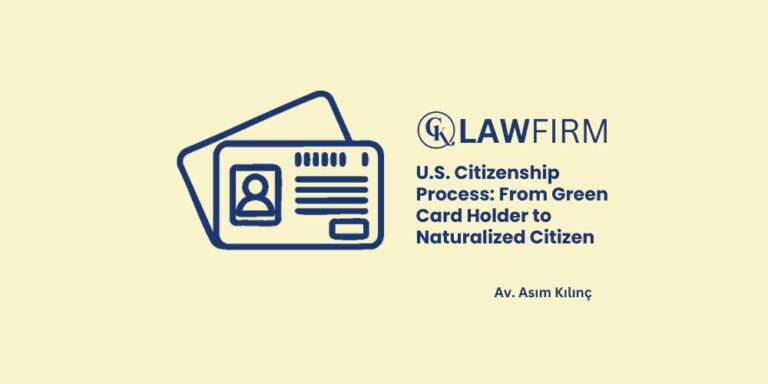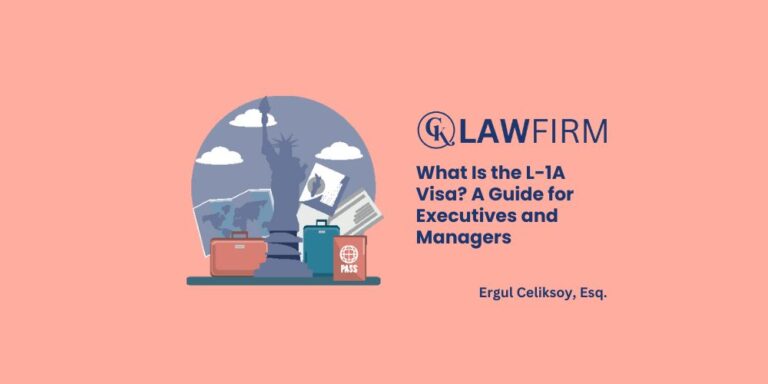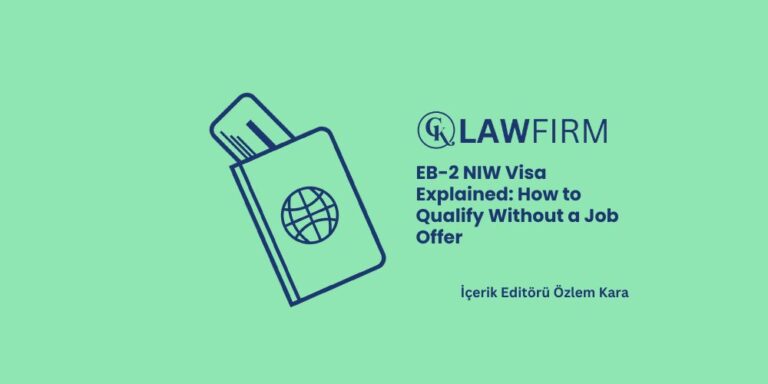Schedule an Appointment with Our Attorneys Now

Comprehensive Immigration Law Glossary for Immigrants in the U.S.
Navigate U.S. immigration with ease! Use our Immigration Law Glossary to understand key terms and manage your process effectively.
By Asim Kilinc, Immigration Attorney at CK Law Firm
Whether you’ve arrived in the U.S. on an immigrant visa, a non-immigrant visa, or have entered through other means, navigating the immigration process can be daunting. There are many legal terms and concepts that can be confusing. To help you better understand these terms and ease your journey, we at CK Law Firm have created this comprehensive immigration law glossary. Our goal is to provide clear explanations to help you make informed decisions about your immigration status.
Immigration Law Glossary
A
- Adjustment of Status (AOS): The process of changing from a non-immigrant visa status to permanent resident status (Green Card) while staying in the U.S.
- Admissibility: Conditions determining whether a person is allowed to enter the U.S. or adjust their status.
- Affidavit of Support: A document an individual signs to accept financial responsibility for another person, usually required for family-based immigration.
- Alien: A non-citizen or foreign-born individual in the U.S.
- Appeal: A request for a higher authority to review a decision.
B
- B Visa: A non-immigrant visa for visitors entering the U.S. temporarily for business (B-1) or pleasure (B-2).
- Biometrics: Biological data, such as fingerprints and photographs, collected for background checks.
- Border Crossing Card: A document allowing Mexican citizens to cross into the U.S. for short visits.
C
- Cancellation of Removal: A form of relief allowing certain immigrants in removal proceedings to apply for a Green Card.
- Conditional Resident: A person granted permanent residence on a conditional basis, typically for two years, often through marriage.
- Consular Processing: Applying for a visa at a U.S. embassy or consulate outside the U.S.
D
- Deportation: The formal removal of an alien from the U.S. when they have been found removable for violating immigration laws.
- Diversity Visa Lottery: A program providing a limited number of visas annually to people from countries with low rates of immigration to the U.S.
- DACA (Deferred Action for Childhood Arrivals): A program allowing certain individuals who came to the U.S. as children to receive a renewable two-year period of deferred action from deportation and become eligible for a work permit.
E
- Employment Authorization Document (EAD): A document allowing non-citizens to work in the U.S.
- EB Visa: Employment-based immigration visas, categorized into five preference levels (EB-1 through EB-5).
- Expedited Removal: The quick removal of certain inadmissible aliens without a hearing.
F
- F Visa: Non-immigrant student visas (F-1 for academic students, F-2 for dependents, and F-3 for border commuters).
- Form I-485: The application form for Adjustment of Status to become a permanent resident.
G
- Green Card: Informal term for a Permanent Resident Card, which allows an individual to live and work permanently in the U.S.
- Grounds of Inadmissibility: Reasons an individual can be denied entry to the U.S. or adjustment of status.
H
- H Visa: Temporary work visas (e.g., H-1B for specialty occupations, H-2A for agricultural workers, H-2B for non-agricultural workers).
I
- Immigrant Visa: A visa allowing a person to live permanently in the U.S.
- I-94 Form: A form issued to visitors at the time of entry, indicating their visa status and authorized period of stay.
- Illegal Immigrant: A person who has entered the U.S. without proper documentation or has overstayed their visa.
- Immigration and Customs Enforcement (ICE): The federal agency responsible for enforcing immigration laws and investigating illegal immigration activities.
J
- J Visa: Exchange visitor visas for individuals approved to participate in exchange programs (e.g., for study, research, or teaching).
K
- K Visa: Non-immigrant visas for fiancés (K-1) and spouses (K-3) of U.S. citizens.
- K-2/K-4 Visa: Non-immigrant visas for children of K-1/K-3 visa holders.
L
- L Visa: Intra-company transferee visas for employees of international companies being transferred to the U.S.
- Lawful Permanent Resident (LPR): An individual who has been granted the right to live permanently in the U.S.
M
- M Visa: Non-immigrant visas for vocational students.
- Migrant: A person who moves from one country to another, typically for work or better living conditions.
N
- Naturalization: The process by which a foreign citizen becomes a U.S. citizen.
- Non-immigrant Visa: A visa for a temporary stay in the U.S. for purposes such as tourism, business, or education.
O
- O Visa: Non-immigrant visas for individuals with extraordinary ability in sciences, arts, education, business, or athletics.
- Overstay: Staying in the U.S. longer than the authorized period of stay.
P
- Parole: Temporary permission to enter or remain in the U.S. granted by immigration authorities.
- Petition: A formal request to USCIS for a visa or change of status.
- Priority Date: The date an immigrant petition is filed, used to determine visa availability.
Q
- Quota: A limit on the number of visas issued each year in certain categories.
- Qualifying Relative: A family member whose relationship to the immigrant is the basis for an immigration benefit.
R
- Refugee: A person who has been forced to flee their country due to persecution or a well-founded fear of persecution.
- Removal Proceedings: The legal process to determine whether an individual should be removed (deported) from the U.S.
S
- Sponsor: A person who takes responsibility for another individual’s application for an immigration benefit.
- Status: The visa category or immigration classification that defines a person’s rights and responsibilities in the U.S.
T
- Temporary Protected Status (TPS): A temporary immigration status for nationals of certain countries experiencing problems that make it unsafe to return.
- Travel Document: A document allowing travel outside the U.S. and re-entry, such as a re-entry permit or refugee travel document.
U
- U Visa: Non-immigrant visas for victims of certain crimes who assist law enforcement in investigating or prosecuting those crimes.
- USCIS: U.S. Citizenship and Immigration Services, the government agency that oversees lawful immigration to the U.S.
V
- Visa: A document allowing a person to apply for entry to the U.S.
- Visa Waiver Program (VWP): A program allowing citizens of certain countries to travel to the U.S. without a visa for stays of 90 days or less.
W
- Waiver: An official document granting forgiveness for certain immigration violations or grounds of inadmissibility.
Y
- Youth: Special immigrant juvenile status (SIJS) for certain undocumented minors who are unable to reunite with one or both parents due to abuse, neglect, or abandonment.
Z
- Zero Tolerance Policy: A policy that refers to the enforcement of all immigration laws without exception.
Conclusion
Navigating the U.S. immigration system can be challenging, but understanding these key terms can make the process easier. If you need personalized assistance with your immigration journey, CK Law Firm is here to help. Contact us today for expert legal advice and support.





